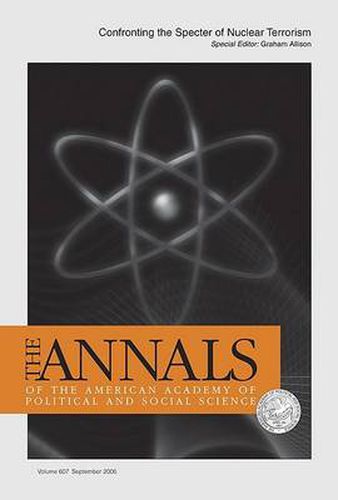Readings Newsletter
Become a Readings Member to make your shopping experience even easier.
Sign in or sign up for free!
You’re not far away from qualifying for FREE standard shipping within Australia
You’ve qualified for FREE standard shipping within Australia
The cart is loading…






This title is printed to order. This book may have been self-published. If so, we cannot guarantee the quality of the content. In the main most books will have gone through the editing process however some may not. We therefore suggest that you be aware of this before ordering this book. If in doubt check either the author or publisher’s details as we are unable to accept any returns unless they are faulty. Please contact us if you have any questions.
Most world leaders agree that nuclear terrorism represents the gravest international security challenge today. Many scholars and practitioners, however, argue that the United States remains ill-prepared to cope with this serious and real threat. What role should the U.S. play in confronting and combating this danger? Is nuclear terrorism preventable? What steps have the U.S. already taken to prevent a nuclear catastrophe and what future steps should the U.S. government take? Esteemed scholars, scientists and policymakers address these crucial questions from all sides - strategic, tactical, ideological, and technical.
Employing several vantage points, this special issue of The ANNALS clarifies and assesses the threat of a nuclear terrorist attack and examines possible solutions for preventing such a catastrophic event. The papers in this volume take a comprehensive historical look at the development of the threat of nuclear terrorism, and assesses how that threat has changed over time.
The highly distinguished list of contributors to this thought-provoking issue provides readers with an authoritative overview of this critical and timely topic. Students, scholars, policymakers, and practitioners will find this collection a valuable resource for understanding the current threat level of nuclear terrorism as well as practical recommendations for reducing the risk of a nuclear terrorist attack.
$9.00 standard shipping within Australia
FREE standard shipping within Australia for orders over $100.00
Express & International shipping calculated at checkout
This title is printed to order. This book may have been self-published. If so, we cannot guarantee the quality of the content. In the main most books will have gone through the editing process however some may not. We therefore suggest that you be aware of this before ordering this book. If in doubt check either the author or publisher’s details as we are unable to accept any returns unless they are faulty. Please contact us if you have any questions.
Most world leaders agree that nuclear terrorism represents the gravest international security challenge today. Many scholars and practitioners, however, argue that the United States remains ill-prepared to cope with this serious and real threat. What role should the U.S. play in confronting and combating this danger? Is nuclear terrorism preventable? What steps have the U.S. already taken to prevent a nuclear catastrophe and what future steps should the U.S. government take? Esteemed scholars, scientists and policymakers address these crucial questions from all sides - strategic, tactical, ideological, and technical.
Employing several vantage points, this special issue of The ANNALS clarifies and assesses the threat of a nuclear terrorist attack and examines possible solutions for preventing such a catastrophic event. The papers in this volume take a comprehensive historical look at the development of the threat of nuclear terrorism, and assesses how that threat has changed over time.
The highly distinguished list of contributors to this thought-provoking issue provides readers with an authoritative overview of this critical and timely topic. Students, scholars, policymakers, and practitioners will find this collection a valuable resource for understanding the current threat level of nuclear terrorism as well as practical recommendations for reducing the risk of a nuclear terrorist attack.